Media | Articles
How Coventry Climax’s inline-four evolved from humble water pumper to racing live wire
After World War II, the tech genie emerged from its lamp to herald the most fruitful period of engine design car enthusiasts had ever enjoyed. Aston Martin and Jaguar introduced breakthrough DOHC straight-six engines. Ferrari launched its spectacular SOHC V-12. New high-compression V-8s armed Cadillac, Oldsmobile, Studebaker, and Chrysler with legitimate bragging rights. In England, Coventry Climax gave the lowly inline four-cylinder engine a stay of execution.
Coventry is the ninth largest city in England and a popular destination for tourists intrigued by the medieval castle left in ruins after WWII bombing. The company that bears the city’s name was founded in 1903 as a machinery and engine manufacturer. Coventry Climax (CC) thrived here for more than eight decades.
Credit the British government’s Ministry of Defense for making Coventry Climax a name worth revering. In 1950, that agency requested bids for a new portable engine-driven fire pump capable of delivering twice the water provided by an existing design in a unit weighing only half as much. CC’s boss, Leonard Lee, had a secret weapon he wielded to win the ensuing competition—two of the world’s most enlightened engine designers. Walter Hassan (the genius behind Jaguar’s first V-12 in 1971) had just joined CC as chief engineer and technical director. Harry Mundy, a brilliant engine designer from the BRM F1 team, had recently come onboard as chief designer.
By the spring of 1951, CC’s prototype engine that would power the water pump was producing a reliable 36 horsepower at 3500 rpm, easily fulfilling the government’s requirement. Coded FW for featherweight, this 1020cc (62 cubic inch) inline-four had aluminum block and head construction with dry cast-iron cylinder liners providing durable bore surfaces. (With dry liners, there is no coolant between the liner and surrounding structure.) A two-stage drive spun a single overhead camshaft: gears between the crank and a half-speed shaft that also drove the magneto and fuel pump, and by a duplex (two row) chain from the intermediate shaft to the camshaft. An overhead-cam layout was chosen because Hassan knew its ability to spin reliably at higher rpm (versus pushrod-operated valves) would expedite CC’s horsepower chase.
Marketplace
Buy and sell classics with confidence
20200121210904)
Five main bearings are the norm in today’s inline-fours, but CC’s FW had only three to minimize weight, friction, and cost. The cast-iron crankshaft was equipped with four balance weights to curb vibration. The oil sump, the cylinder-head cover, and the front-drive cover were light aluminum castings. Valve lash was set by shims positioned between each cam lobe and its respective stem.
Britain’s motorcycle industry, also shaking off postwar doldrums, provided ample design inspiration. Hassan was particularly impressed by the intake-port and combustion-chamber details he discovered in a Sunbeam S7 air-cooled vertical twin. Mundy made good use of internal-combustion-engine pioneer Sir Harry Ricardo’s discovery that swirling the air-fuel mix entering the combustion chamber by any available means is an excellent way to accelerate flame travel following ignition.
A fast-moving flame front maximizes the torque produced during the piston’s downward sweep (expansion stroke) and minimizes the unburned fuel exiting the cylinder during the exhaust stroke. Swirl is achieved by carefully shaping the intake port and the combustion chamber, largely a trial-and-error process in the early 1950s. Today, computational fluid-dynamics software helps engineers create swirl on their computer screens.
Mundy configured the FW cylinder head as a U-flow design with the intake and exhaust ports emerging from its left flank. Crowding eight ports along the length of the head limited their size and shape. Today, crossflow heads—with the intakes on one flank, exhausts on the other—are common practice because that arrangement provides ample space for larger ports. To streamline flow into and out of the wedge-shaped combustion chambers, the valves were canted 20 degrees toward the ports.
The air-fuel mixture traveled from a single-barrel downdraft Solex carburetor to an intake manifold with runners angled 15 degrees downward toward the four ports. Exhaust gases shot straight out of the head into a log-shaped four-into-one manifold. The intake manifold was a simple tubular-steel design; the exhaust manifold was cast iron. They were bolted together beneath the carburetor to use exhaust heat to help vaporize the incoming fuel.
Weight was critical because these fire pumps were heaved into service by two men grabbing handles attached to the unit’s tubular framework. CC easily met the maximum 350-pound limit for the entire package, including the fire pump, the fuel tank, the battery, and the support frame with an engine weighing only 180 pounds—20 fewer pounds than a VW Beetle’s 1131-cc flat-four.
20200121210846)
One other tough requirement was the engine’s ability to start and run at full power with essentially no warm-up. Achieving that requisite demanded excellent lubrication and carefully regulating the expansion rates of the major components. Although the exact developmental details have been lost to time, it’s safe to assume that a high-volume oil pump was an absolute necessity. At the front of the engine, a belt drove a water pump and a small fan. The cooling water was drawn from a header tank filled by the firefighting pump.
CC’s shrewd engine design won the government’s contract to supply 5000 engine-and-pump units, plus two successive renewals for 10,000 more. This made Lee, named chairman when the company went public in 1951, a star in the eyes of his board of directors. What they didn’t know was his ambitious aspirations for the little four-cylinder that could.
CC had a distinguished history supplying engines to the military and more than a dozen carmakers, but it had steered clear of motorsports because profits in this perilous realm were rare. Proud of what CC had accomplished with its new state-of-the art engine, Lee dipped a toe into racing waters by displaying the FW at the 1953 Earls Court motor show, Great Britain’s premier gathering of the auto-and-racing fraternity faithful. Colin Chapman of Lotus and Cyril Kieft, who employed driver Stirling Moss in Formula 3, took the bait.
A for effort
Auto show exposure prompted the first son of FW, the FWA, with the third letter standing logically for “automotive.” Kieft Cars signed on to use CC’s new engine in one of its sports racers entered in the 1954 24 Hours of Le Mans.
To take full advantage of the 1100cc class limit, the FW’s bore was increased from 2.75 to 2.85 inches, raising displacement to 1097 cc; the 2.625-inch stroke was left unaltered. The crankshaft was switched to tougher forged steel in place of the FW’s cast iron. Compression was raised from 7.4 to 8.8:1, and ports, valves, and valve pockets were enlarged to the practical limit. A distributor replaced the magneto ignition, and carburetion was upgraded to twin SUs. These changes doubled output to 71 horsepower at 6000 rpm. Although flat-out racing longevity was unproved at this point, the toughness built into FW engines to meet the government’s service requirements certainly favored its durability.
At Le Mans, the FWA ran impressively until the 11th hour, when the Kieft car driven by Alan Ribbon and Bill Black retired with rear-axle failure. (Zora Arkus-Duntov, at the time a GM employee, codrove the class-winning Porsche 550RS Spyder.)
Following its endurance racing debut, rising interest in the FWA engine prompted Coventry Climax to pursue three stages of development, lifting output to 90 horsepower at 7000 rpm by 1956. Changes included fully machined combustion chambers with the compression raised to 10.5:1, more aggressive valve timing, stiffer valve springs, and a new cylinder head providing five instead of three bearings for better camshaft support. Stronger connecting rods with larger cap bolts were also fitted.
Customers who switched from the downdraft SUs to sidedraft Weber carburetors achieved 96 horsepower at 7300 rpm. That’s impressive for an engine with a base price of £250 (roughly $318 then or $8650 after inflation, equivalent to the cost of a small used car in England).
Cooper, Kieft, and Lotus ran the uprated FWAs at Le Mans in 1955, with only Cooper surviving the full 24 hours. The next year, Lotus earned a spectacular seventh-overall finish, with Cooper a lap behind. In the ’57 event, Lotus earned 9th-, 13th-, 14th-, and 16th-place finishes with Cooper nestled in at 15th. CC’s reputation as a race-engine builder was golden.
B for brawny
20200121210707)
In anticipation of the new-for-1956 1500cc Formula 2 class, carbuilders knocked on CC’s door for competitive engines. Happy to oblige, Hassan increased the FWA’s bore and stroke to raise displacement to 1460 cc and output to 108 horsepower. Water passages between the first and second, and third and fourth, cylinders had to be eliminated to accommodate the new 3.0-inch bore, but durability testing revealed no cooling issues. The compression ratio was raised to 11.4:1. When reliability issues were discovered during testing, the redline was dropped to 6500 rpm. Lotus raced the FWB in its Eleven and 17 sports cars without much success. The U.S. marine enterprise Bearcat also used an FWB in its outboard motors.
Shorter-stroke FWC
To challenge the efficiency category at Le Mans, Colin Chapman commissioned CC to build new C-series versions of the FW four-cylinder with a 1.78-inch stroke to reduce displacement to 744 cc. Peak output fell to 59 horsepower at 8000 rpm, but the strategy worked perfectly, and a Lotus Eleven driven by Cliff Allison and Keith Hall finished 14th overall to win the 1957 Index of Performance prize. Stateside, Dan Gurney won several club races with an FWC engine powering his single-seater.
E for elite
Colin Chapman’s success with CC engines led to a contract for 1000 FWEs to power fiberglass-bodied Lotus Elite sports cars built from 1957–1963. This edition of the venerable FW combined the original FWA crankshaft with the FWB block. A 3.00-inch bore with a 2.625-inch stroke yielded 1216 cc (often rounded to 1220 cc). The Stage I version with 10.0:1 compression, a low-lift camshaft, and a single SU carburetor produced a modest 70 horsepower. Adding a second SU in Stage II yielded 81 horsepower. The Stage III version climbed to 96 horsepower with more aggressive valve timing and lift. Fitting a tubular-steel exhaust manifold and a ported head with an 11.1:1 compression ratio for track use and topped out the FWE at a potent 105 horsepower.
Another notable roadgoing application of CC’s FW-series four was in Hillman’s Mini competitor, the Imp. FWMA engines manufactured under CC license by the Rootes Group ranged between 875 cc and 998 cc in the 1963 through 1976 model years. The rear-engined Imp enjoyed more than its share of success in rallying and touring-car competition.
The FWG that never was
Skipping the letter F, in 1964 Lee made one final attempt to plumb the FW engine’s power-producing depths. Aiming at the 1.0-liter Formula 2 single-seater class, CC engineers fitted their FWG engine with a twin-cam cylinder head and valves positioned with an included angle of 52 degrees. A 3.00-inch bore and a 2.15-inch stroke resulted in 997 cc of displacement. Four hours of dynamometer tuning yielded 97 horsepower at 9100 rpm. Realizing that Honda’s 16-valve four-cylinder revved higher and produced at least 30 percent more power, CC engineers shelved the FWG after building only one in order to focus on more fruitful projects.
Venturing beyond the FW
20200121210729)
CC’s FW engines absolutely dominated motorsports in their day with a remarkable 1988 units sold for automotive use. From that auspicious beginning, CC delved into pure racing designs, including twin-cam fours, four-cam V-8s, and an exotic flat-16. Major achievements before and after CC exited the race-engine business in 1966 were:
- Formula 1 championships in 1959, 1960, 1963, and 1965 (with Cooper and Lotus). CC engines won 40 races, and in 1957, the 2.0-liter FPF four powered the first mid-engined car to win a Grand Prix race (Cooper).
- Formula 2 championships in 1958, 1959, and 1960 (Cooper).
- Le Mans 1100-cc class wins in 1956 and 1957 (Lotus).*
- Le Mans Index of Performance victory in 1957 (Lotus).*
- Le Mans overall victories in 1988 and 1990 (Jaguar V-12).
- Tasman Series (Australia and New Zealand) championships in 1964, 1965, and 1967 (Cooper and Lotus).
- Ninth-place finish at the 1961 Indy 500 in the first mid-engined roadster (Cooper) powered by CC’s 2.75-liter FPF four.
*1097cc FWA and 744cc FWC engines
Unfortunately, the publicity value of CC’s racing efforts never quite covered engineering and manufacturing costs, and Jaguar purchased the company in 1963. The adverse business climate that put every British brand under severe stress prompted the merger of Jaguar with the British Motor Corporation (MG and Austin) in 1966 to become British Motor Holdings. Two years later, BMH and Leyland joined forces to form the British Leyland Motor Corporation, which was nationalized in 1975. Coventry Climax’s remains (not including fire-pump manufacturing) were shuffled off to a commercial-vehicle group in 1978. When that enterprise went into receivership in 1986, CC’s spare-parts business was taken over by the Cronin family. Today, Peacock Engineering, located at 65 Westow Street in London, still offers spare parts and complete CC FWA engines for “road, fast-road, or full-race” use.
In the 65 years since CC created its ultralight phenom, the humble inline-four has benefited from countless technological advances. Balance shafts to curb vibration. Four-valve DOHC heads to raise power while reducing consumption and emissions. Turbocharging and supercharging to boost output. Variable valve timing, cylinder shutdown, and engine stop/start to improve efficiency. Advanced bore-surface treatments to provide a cost-effective alternative to iron or steel cylinder liners. More die-cast aluminum components to save weight. Increased piston displacement to serve the towing and hauling needs of brawny pickups.
Evolution has been kind to the four-cylinder, and what CC begat is today healthier than ever.
The article first appeared in Hagerty Drivers Club magazine. Click here to subscribe to our magazine and join the club.
20200121210451)


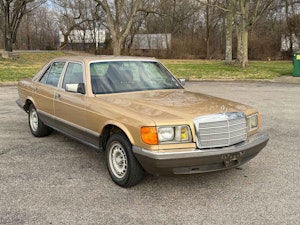
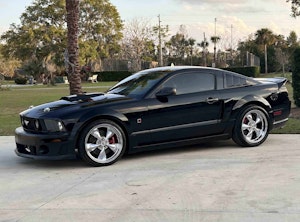

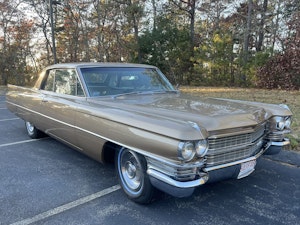
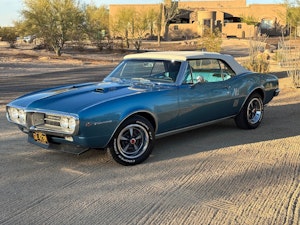
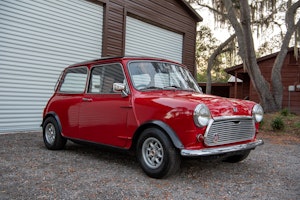


Was also the motor for the Hillman Imp.
Great article. Thanks for posting this. I was a kid during the late 1950’s and early 1960’s when Chapman was busy ‘adding lightness’ to this cars. We all yearned for one of his inventions back then, but, as school kids, all we could afford was a three speed CCM bicycle.
My Mother had a 1967 Imp brand new
This reminds of the surgery conducted in Warwickshire at the start of the swinging sixties in the love-lives of the population.
Upon asking one of the Coventry ladies how long it took her to reach Climax the researcher was astonished to receive the reply “20 minutes, or ten if I take the bus.”
BTW, Coventry doesn’t have a castle, but it does have a bombed-out cathedral.
Survey, not surgery. B****y Ipad 🙁
Good article, interesting for me. Thanks.